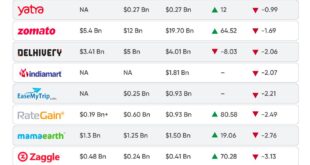By far the largest part of the drone market is military and security applications with an estimated $70 billion market share by 2020. The market for commercial drones is expected to reach $13 billion by 2025.
One example of a drone technology company is Draganfly Inc. Digital Journal spoke with Cameron Chell, chairman and CEO of Draganfly, about the impact of the U.S. legislation change grounding drones made by Chinese companies.
Digital Journal: How has drone technology advanced in the past two years?
Cameron Chell: The integration of sensors along with cloud computing and the advent of 5G technology for drones is drastically advancing their capabilities. As technology advances, those sensors are able to react faster and AI processing can happen much more quickly so drones can safely be flown beyond line of sight or autonomously. You’ve heard of smart phones – today it’s becoming all about smart drones.
DJ: What are the biggest drone markets?
Chell: The drone market is expected to reach $43 billion by 2024 and the energy sector is the largest industry in the drone space today with transport being the fastest growing market it general. The survey space represents the greatest potential for the commercial application of drone technology. Survey encompasses land survey to accident investigation to volumetrics and security. Drones provide eyes in the sky that can deliver intelligent data. That is by far what I call the mega category of drones. Construction and agriculture have their uses in survey as well as does public safety for surveillance and accident investigation. Of course there are also major uses in the military/government sectors, infrastructure, utilities, photography and videography for hobby and personal use.
DJ: Why does the U.S. have concerns over Chinese manufactured drones?
Chell:The U.S. has concerns over drones that are manufactured outside its own sovereign or close ally supply chain. Drones are incredible at collecting all kinds of data and the geopolitics with any non-closely allied nation would be a concern. China in particular because they have laws that allow them to have access and use data from any Chinese company. Whether its visual data or air quality data, or how many other drones are up in the sky data, proximity data, drones can collect terabytes of all kinds of data per day on vastly different things. That could be traffic patterns, weather patterns, tidal patterns, migration patterns and that’s the issue. Drones provide unprecedented amounts of intel all of which can be correlated to provide amazing intelligence.
DJ: What solutions is Draganfly working on?
Chell:Draganfly is working on multiple solutions that drones are incredibly efficient at. A few examples are counter drone solutions used to detect and intercept unmanned aircraft. As concerns grow around the potential security threats drones may pose to both civilian, infrastructure and military entities, this technology is rapidly emerging. We are working on hybrid drone solutions that encompasses vertical take-off and landing but horizontal flight. We are working on delivery solutions that covers mission critical payloads right through to proprietary auto pilot systems and data security. We also have a ground robot system that works in conjunction with aerial drones and we have fixed wing drones that stay in the air for multiple hours.
DJ: How was the Draganfly quadcopter developed?
Chell:After beginning to offer hobby solutions in 1999 the company realized there were commercial opportunities when it added a video camera to the airframe. The development of the Draganflyer quadcopter was a game-changer and sparked the imagination of thousands. They have become amongst the most widely known systems in the industry today. The goal was to build machines that were fun and easy to fly from which an understanding of practical applications started to emerge.
DJ: What are the remaining limitations with drone technology?
Chell:In the medium-term AI and 5G will revolutionize drones and what they will do in society. In the short-term, noise is a limitation right now, along with government regulations (beyond line of sight operations, flights over people, drone weight) and battery life.
 Unmanned Aerial Vehicle The latest drone news
Unmanned Aerial Vehicle The latest drone news




